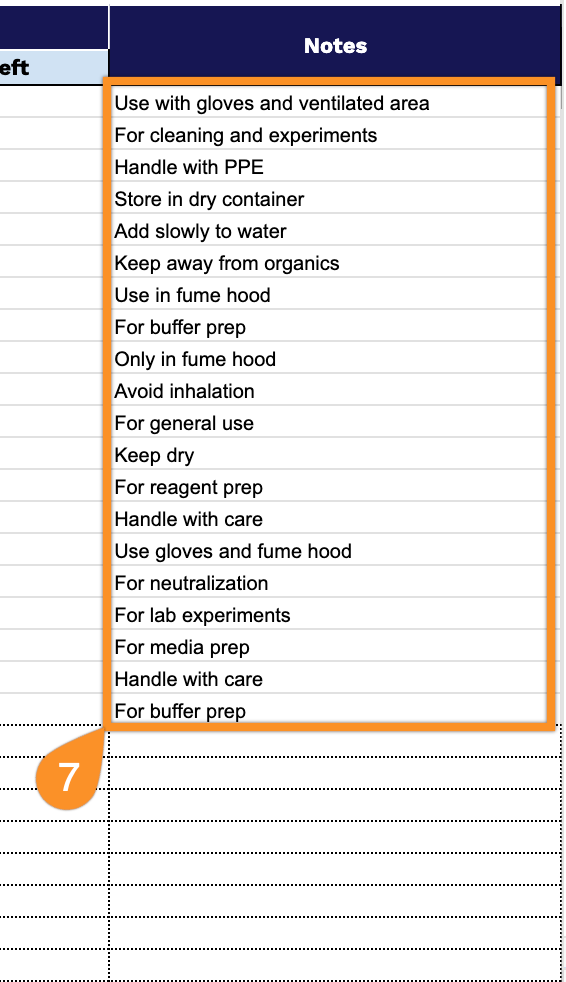Managing your chemical supplies doesn’t need to be stressful or costly. If you operate a laboratory, oversee warehouse operations, or are responsible for workplace safety protocols, accurate documentation of chemical inventory is crucial for meeting regulations and running an efficient operation.
Our free spreadsheet template provides a comprehensive solution for tracking stock levels, storage locations, expiration dates, and safety data within a single, organized framework.
Available in Google Sheets, Excel, and PDF formats, this tool supports regulatory compliance, prevents inventory shortages, and promotes safe chemical handling practices without requiring investment in premium software solutions.
Quick Jump
ToggleWhat Is a Chemical Inventory Spreadsheet?

A chemical inventory spreadsheet is a structured digital record used to track and manage chemicals within a laboratory, facility, or workplace.
This documentation system helps organizations maintain safety compliance, monitor chemical usage, and ensure proper storage and disposal procedures are followed.
Download Spreadsheet Daddy’s Free Chemical Inventory Management Spreadsheet
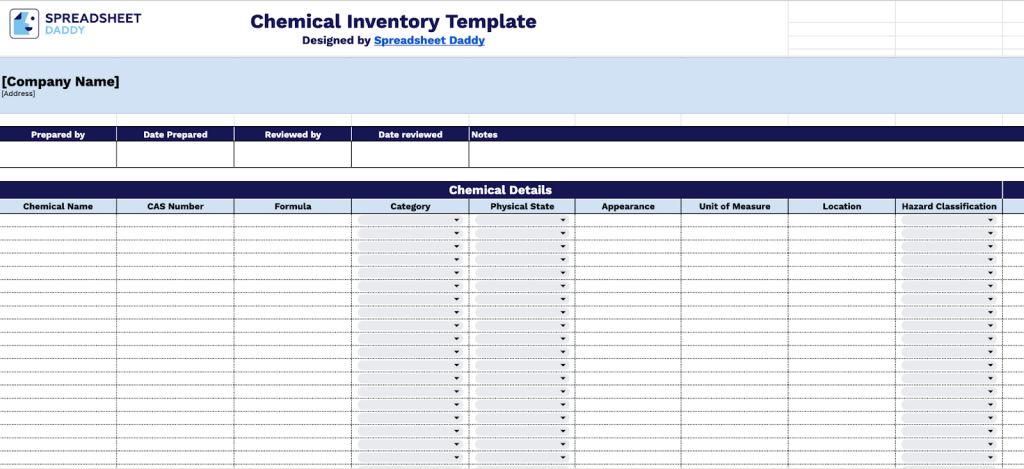
Our Chemical Inventory Template provides a comprehensive system for tracking and managing chemical supplies in laboratory or industrial environments.
The template can be tailored to specific organizational needs by modifying the column structure to include additional fields or remove unnecessary ones.
What’s included
- Complete chemical tracking in one place: This template provides over 20 columns to track all aspects of your chemicals, from basic information such as names and formulas to detailed details like expiration dates and costs. No more juggling multiple spreadsheets or losing track of important information.
- Innovative organization that makes sense: Everything is laid out in four logical sections: Chemical Details (the basics like what it is and where you keep it), Supplier & Purchase Info (who you buy from and when), Pricing & Cost Management (what you’re spending), and Date-Specific Tracking (when things expire and how much time you have left).
- Built-in supplier management: Track vendor contact details and lead times directly in the template. This helps streamline ordering processes and maintain consistent supplier relationships without requiring additional documentation systems.
- Safety compliance made simple: Built-in fields for hazard classifications and CAS numbers help you stay compliant without the headache. Whether you’re dealing with regulatory inspections or want to keep your team safe, the safety information is conveniently located where you need it.
- Ready to go right out of the box: Plug in your company info and start entering your chemicals. With pre-formatted rows and professional headers, you can get organized immediately without spending hours setting up formulas or formatting.
How to Use Our Chemical Inventory Spreadsheet Template
1. Implement this template by copying it to your Google Sheets account or by saving it as an Excel or PDF document.
2. Record your organization’s name and address along with stock handler credentials and finalization timing. Add manager identification and inspection dates, then use Notes to document extra information.

3. Complete the Chemical Details section by entering all essential chemical information:
- Chemical Name: Enter the complete IUPAC or common name of the chemical substance for proper identification.
- CAS Number: Record the unique Chemical Abstracts Service registry number for precise chemical identification.
- Formula: Document the molecular or empirical formula showing the chemical composition.
- Category: Select the appropriate chemical classification (solvents, reagents, acids, bases, salts, etc.).
- Physical State: Specify whether the substance is solid, liquid, or gas at room temperature.
- Appearance: Describe the visual characteristics such as color, clarity, and physical form.
- Unit of Measure: Define the standard measurement unit (e.g., grams, liters, milliliters) for inventory tracking.
- Location: Record the specific storage location within your facility for easy retrieval.
- Hazard Classification: Document safety classifications (flammable, corrosive, toxic, explosive, etc.).
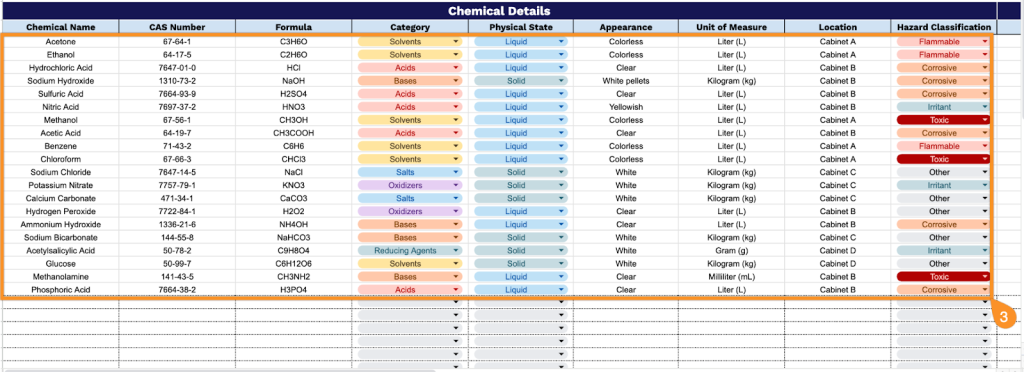
4. Document supplier relationships in the Supplier & Purchase Info section for vendor management:
- Supplier: Enter the name of the chemical supplier or distributor providing the substances.
- Contact Details: Include phone numbers, email addresses, and key contact persons for ordering and technical support.
- Purchase Date: Record when the chemical was acquired for tracking and compliance purposes.
- Lead Time: Document the expected delivery timeframe from order placement to receipt.

5. Track financial and stock data in the Pricing & Cost section for budget management:
- Quantity on Hand: Document the current amount of chemical available for immediate use.
- Par Level: Set the minimum stock threshold that triggers reordering to prevent shortages.
- Unit Cost: Enter the price per unit paid to acquire the chemical for budget tracking.
- Total Value: The template will automatically calculate the overall monetary value of the chemical inventory on hand.
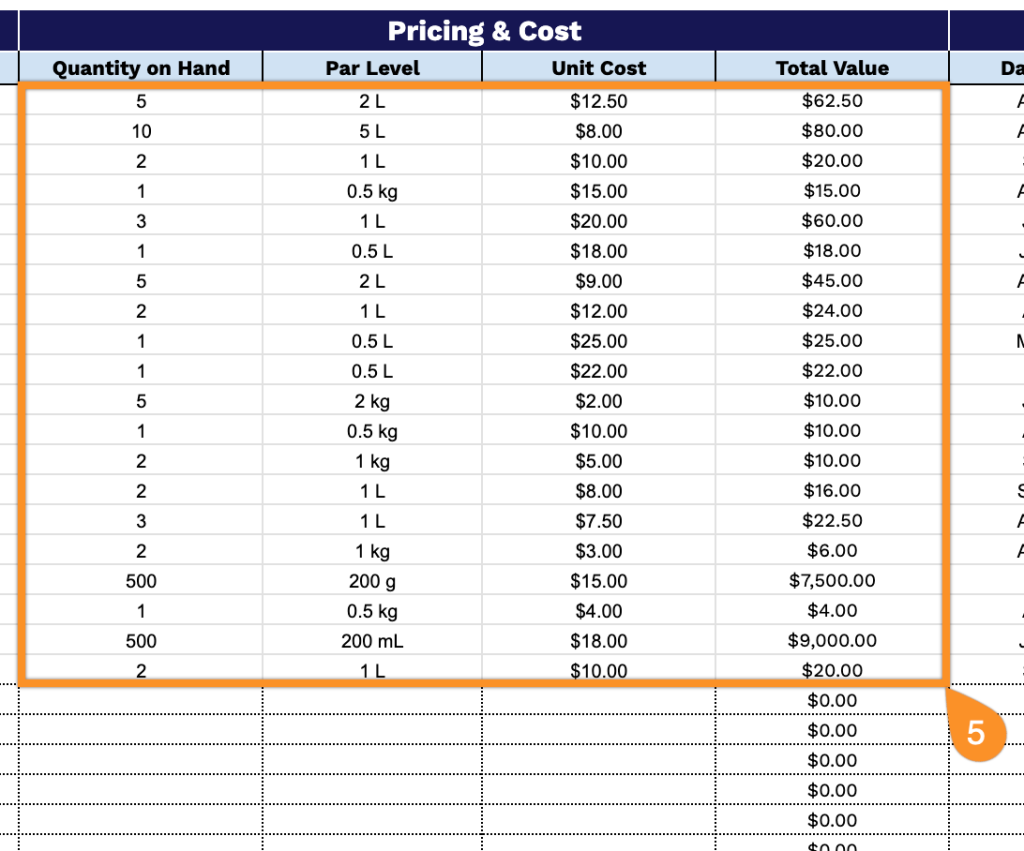
6. Monitor time-sensitive information in the Date-Specific Tracking section for safety and compliance:
- Date Received: Record when the chemical arrived at your facility for proper inventory rotation.
- Expiration Date: Document the manufacturer’s expiration or shelf-life date for safety compliance.
- Days Left: The template will automatically track the remaining time before expiration to prioritize usage and prevent waste.
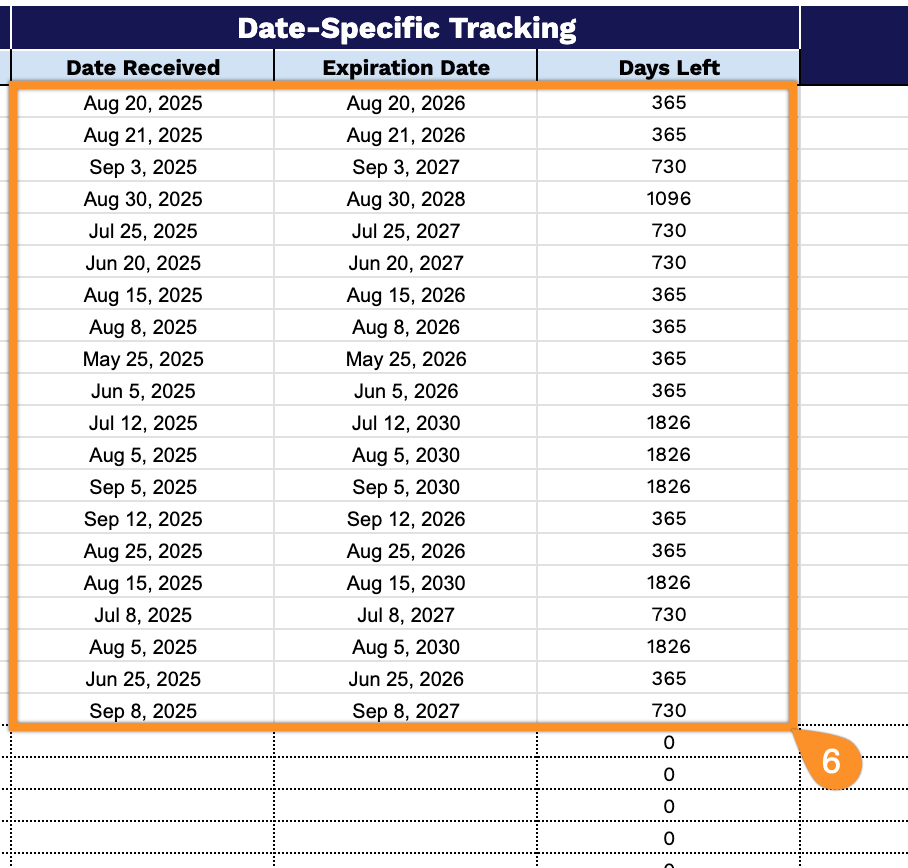
7. Enter any other applicable details into the Notes field.
